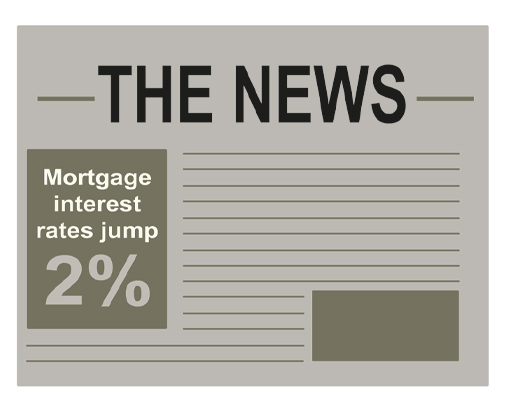3 Percentage points
When comparing percentages, the difference between the percentages is described in terms of ‘percentage points’. Subtracting percentages gives percentage points. Note that this is not the same as the percentage increase or decrease – this distinction is something to be aware of in media reports.
For example, if 72 per cent of students starting at a college were studying maths one year, but only 63 per cent the next, the college had a decrease of nine percentage points in students studying maths. The following example illustrates the difference between percentage points and percentage change using mortgage interest rates.
You see a headline reading ‘Mortgage interest rates jump 2 per cent’. How should you interpret this? Most people read this headline to mean that the interest rate on the loan increases by two percentage points. But is there another way to think about the headline that isn’t as sensational?

The headline is ambiguous. It could mean ‘Interest rates increase by 2 percentage points’ – for example, from 10 per cent to 12 per cent. This is a big deal – your interest rate just went up 20 per cent, as the 2 per cent extra is 20 per cent of 10.
On the other hand, the headline could mean ‘Interest rates increase by 2 per cent based on your previous interest rate’. In our example, that would mean rates go up from 10 per cent to 10 per cent + 2 per cent of 10 per cent, which is only 10.2 per cent (0.10 + 0.02 × 0.10 = 0.10 + 0.002 = 0.102 = 10.2%). Not great news, but hopefully manageable and much better than the first interpretation.
So you should be able to see how important it is to use the correct language. When people mean percentage points, they should say so! Unfortunately, many news articles do not. It’s up to you to find out from the article itself what it is about. You will often see articles that contain percentages online, in newspapers and magazines, or in study material in many different subjects, and it is important to consider carefully what these represent. Now you have the skills to enable you to do that successfully. This section finishes your exploration of percentages, but before you get onto this week’s quiz you’ll look at one final way to compare numbers that you may come across: ratios.
